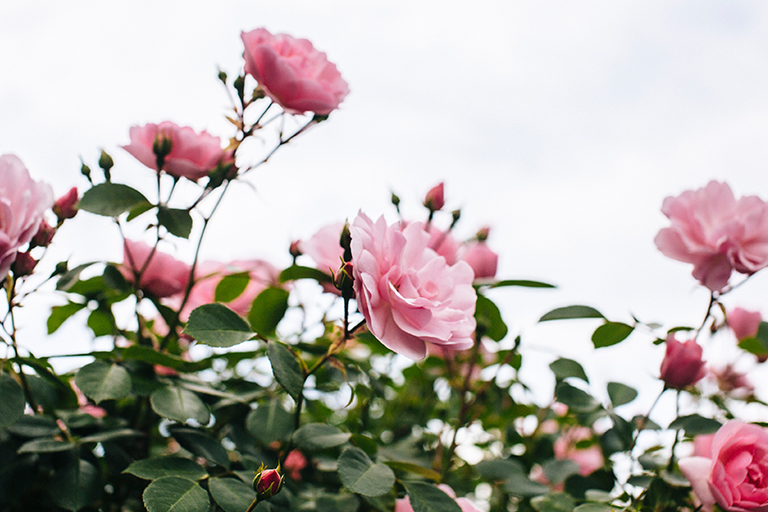By Vicki Spencer
Roses and rose gardens have been cherished for their beauty and fragrance for centuries. Some gardeners may be surprised to find that these beloved plants grow quite well in our semiarid climate.
When I bought my first house at the age of 25, my mother started the tradition of giving me a new rose bush every spring. I was lucky to have her help me plant the new additions and prune them properly. Before long, they flourished in my garden. I had quite a collection by the time I sold my home, but my roses never seemed to blossom as much as my mother’s. She had, as they say, a real green thumb. Rose bushes lined the walls along my parent’s property line, and the flowers bloomed from late spring into the fall. Even after moving to a patio home, my mother continued to maintain a beautiful rose garden.
If you want to try growing roses, you should consider whether you prefer heirloom varieties or modern hybrids; or maybe you want to grow both. Heirlooms roses are available today largely because of “rose rustlers” who rescued them from neglected cemeteries and abandoned homesteads. These dedicated individuals resurrected plants that were passed down through generations of gardeners, though some of the names have been forgotten. Hybrids, on the other hand, are newer varieties that are popular because they offer desirable characteristics, such as repeat blooming, compact growth, disease resistance and perfectly shaped flowers.
Noisettes are among the first class of roses originating in the United States. They boast tall, graceful flowers in yellow, white or pink and bloom from summer to fall. Their fragrance is rather musky.
Among the heirlooms, I prefer the deep fragrance of damask roses, which date back to Biblical times. There are two groups of damasks. Summer damasks bloom early in the summer and the other, autumn damasks, repeat blooms in the late summer or fall. Both groups do well in full or partial sun and need room to sprawl.
Another beautiful heirloom I have grown is White Rose of York. It is a tough rose that produces large, extremely fragrant white blooms with golden stamens. It grows best in full sun.
A large variety of heirloom tea roses come from China. They often grow as climbers, producing large, fragrant flowers with few thorns and require little pruning. They should be planted in well-drained, fertile soil in a sunny location.
Hybrids, such as floribunda, are more disease resistant than most heirlooms. They require little care and bloom profusely all summer. The flowers are in clusters and their compact growth makes them good for your garden edges.
Another popular hybrid is grandiflora. This variety displays hardiness, continuous flowering and clustered blooms. Grandiflora typically grow 6 feet tall, with one long stem erupting in a large bouquet of flowers. They are good as background flowers in your garden and make wonderful cut flowers for the house.
Regardless of whether you choose heirlooms or hybrids, you will enjoy growing roses. When buying your roses, look for the date of introduction as well as the plant’s description. This way, you can find varieties that are consistent with the vintage of your house and are suited to your garden space and landscape style.
If you never grew roses or are experienced but looking for new ideas, you could visit some of the rose gardens on the Front Range. The town of Littleton has been the site of the War Memorial Rose Garden for over half a century. The garden was developed to honor veterans of World Wars I and II. Located near the Littleton Museum and Bemis Public Library, you can wander through the garden and view over 1,800 roses. The garden is recognized by local and national rose societies and is often rented for weddings and other special events.
Another unique site for viewing roses is the garden developed by the Jefferson County Sheriff’s Office. It is located at the northeast corner of the Jefferson County Complex in Golden and is thought to be the only public rose garden in the United States planted at a jail and maintained by inmates. Detainees who go through background checks can reduce their sentences by working in the garden. They receive horticultural training with a focus on the planting and care of roses. As a result of their efforts, more than 400 varieties of roses bloom all summer. You can see hybrid tea, grandiflora, floribunda, miniature, hardy shrub, old garden, climbing varieties and much more. It’s the perfect place to learn about the different rose varieties, how they look and how well they grow in our climate.

